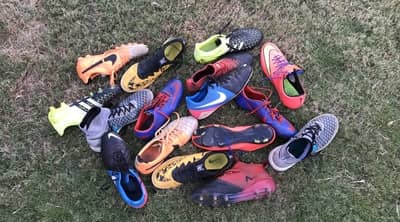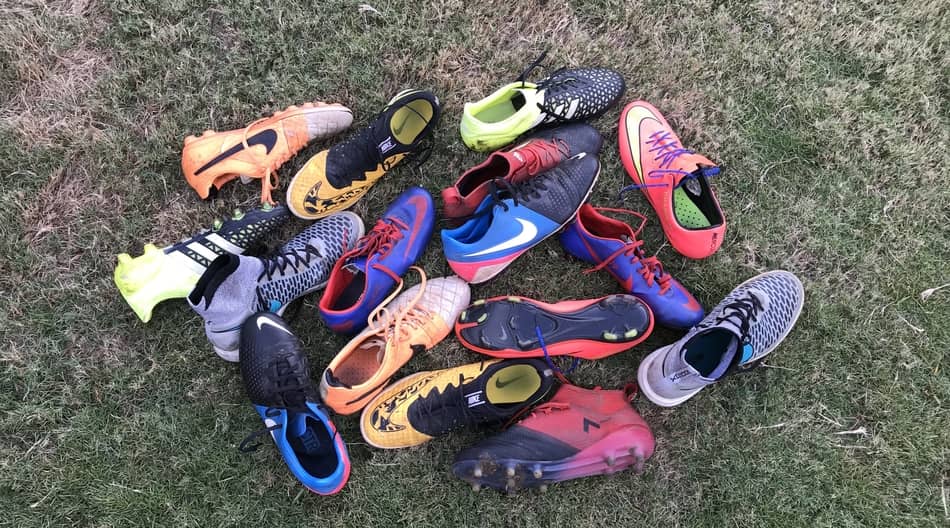
Each time I am going to buy a new pair of soccer cleats I always make sure I get the correct outsole for the surface I am playing at. In this way, I prevent injuries from bad chosen soccer cleats. However, the hardest time I have when buying soccer cleats is when I have to pick between soft and firm ground outsoles. I made this guide with images so you get this right every time.
So, what’s the difference between SG and FG soccer cleats? They are different outsoles meant to be used in different playing surfaces. SG is an outsole with screwed-in removable metal studs meant to be used in cushioned, wet natural grass fields. In the other hand, FG is an outsole made to be used in natural grass pitches with a harder, rougher, dryer, and less treated surface.
However, there are a lot more differences between both. In fact, in most cases you won’t need to buy a pair of SG boots because an FG outsole will work great for both surfaces. SG, we could say is a more sophisticated outsole that is mostly used by professional soccer players in flawless soccer pitches, although sometimes amateur players will need a pair of this type of cleats too.
When should you use each pair?
FG = Firm Ground Soccer cleats
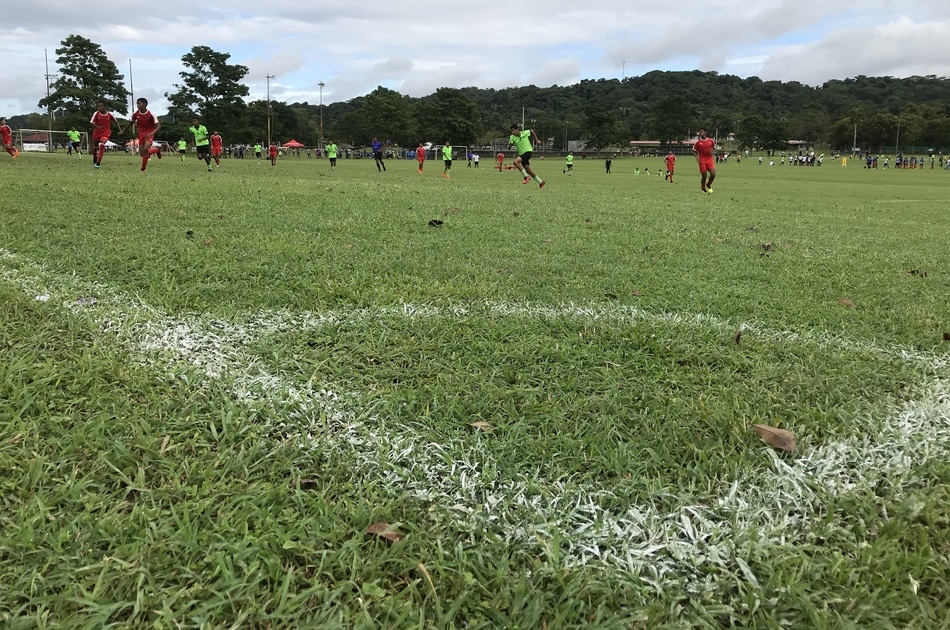
FG soccer cleats are shoes made to be used in a surface like the one in the picture above. As you can see, we are talking about a natural grass field that has a hard base and a dry surface. In this type of grass, the cleats are not going to penetrate too deep, because, as the name says, it is a firm surface.
In my recommended soccer cleats page you can find out what I believe are the best boots for this surface.
To be honest, this is the surface where most amateur players are playing at. If we play in natural grass, most of the times it will be a firm ground surface. This happens because it is easier for organizers to maintain this type of surface than a soft ground field. They are not as professional and pleasant to play at, but are still great for playing soccer anyways.
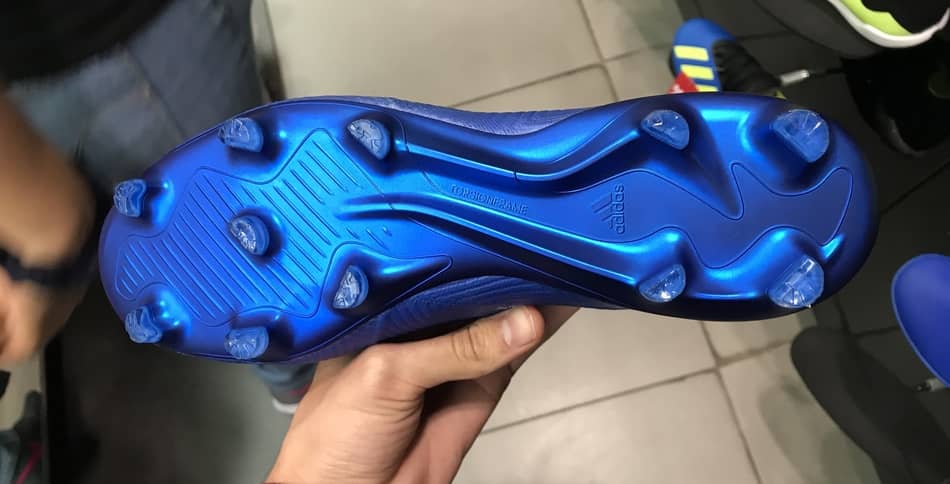
In the picture you can see an FG soleplate. As you can see, most of the times they will be made of plastic studs that penetrate the firm ground surface ideally. Mostly, when we are going to buy a pair of soccer cleats for natural grass, the ideal pair to buy is an FG outsole. Only in rare cases we will truly need a pair of soft ground soccer cleats
Another reason why FG soccer cleats are the most purchased around the world is because of the possibility they have to be used in multiple surfaces. If you buy these cleats, you will be able to use them with no problem on firm ground, soft ground, and in some cases, on artificial grass.
However, you should be very careful if you decide to use these boots on artificial grass, as this is a totally different surface from FG , and not all FG cleats will be safe to use on this surface.
If you are playing on both artificial grass and turf make sure you read my article “The Big Difference between Turf and Artificial Grass” so you learn how to choose the correct boots to play on synthetic grass fields.
SG = Soft Ground Soccer Cleats
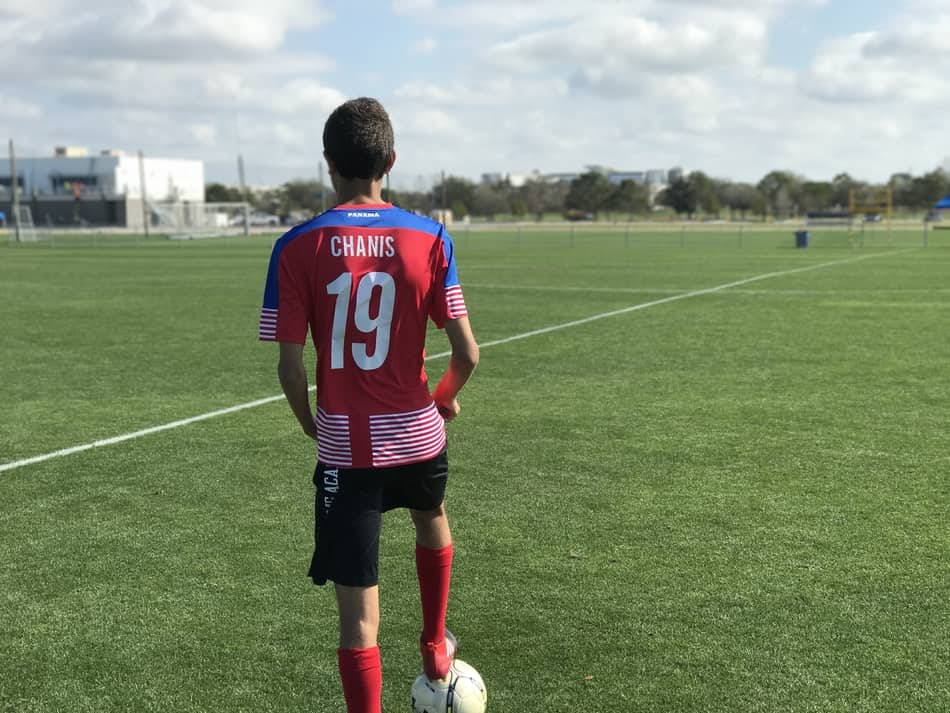
As you can see in the picture, a soft ground playing surface is a natural grass pitch that has a cushioned, wet base, in which soccer cleats will penetrate a lot more than in firm ground. Soft ground fields are usually where professional soccer players play at. They are typically well cared, fertilized, watered, and mowed. When installed, they are given a good base of sand and gravel that provides that cushioned, professional feel.
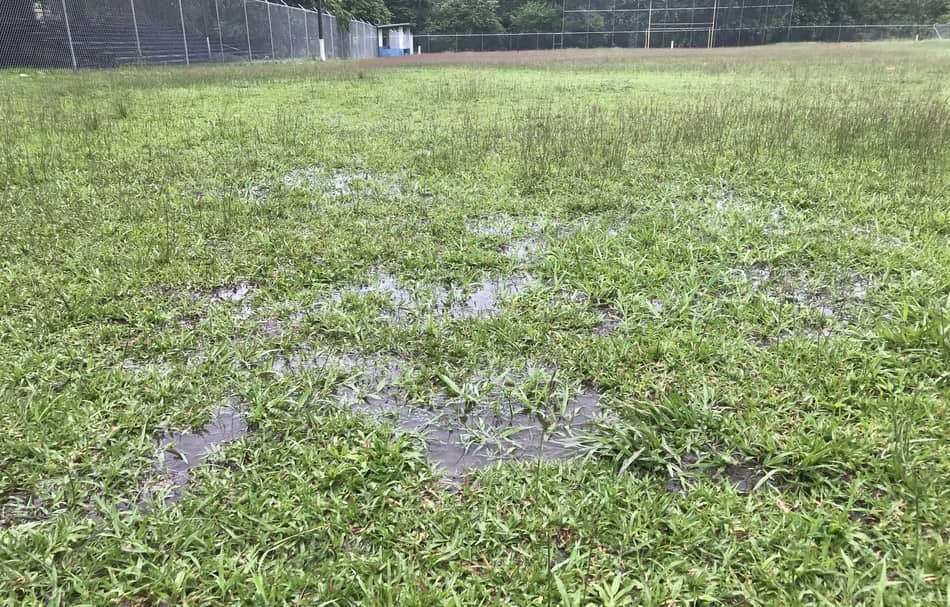
That’s why I said that most of the times, for amateur players, we won’t need a pair of SG soccer cleats because we simply are not playing in this surface. However, soft ground fields are not exclusively professional pitches. We can also qualify as a soft ground surface muddy soccer fields, that are excessively watered as a result of the rain. Too much water makes the ground too soft, which makes us require a more aggressive outsole that will penetrate the surface deeper to give us the traction we need.
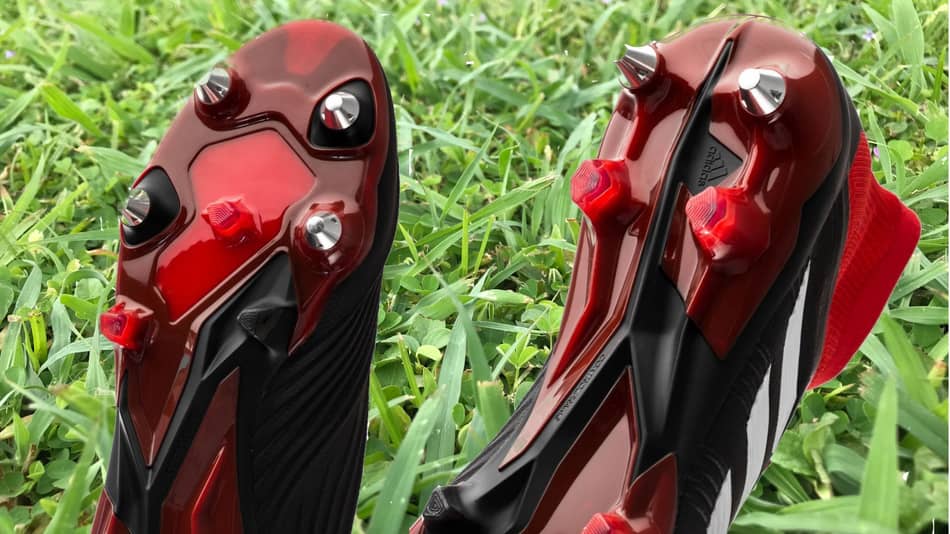
It is only in these cases when we will need a pair of Soft Ground or SG soccer cleats. SG outsoles are made of a mix between plastic studs and screwed-in metal studs that you can remove to change for other studs with different shapes and sizes. The metal studs provide the aggressive traction and grip you’ll need in a soft and wet playing surface where studs will penetrate deeply.
I would recommend to only buy this pair of soccer cleats if you are EXCLUSIVELY playing in a soft ground playing surface. In contrast to FG cleats, this an outsole made to be used only in soft ground surfaces and can be dangerous to use in another surface as you run the risk of getting a serious injury. ABSOLUTELY BY NO MEANS USE SG CLEATS ON ARTIFICIAL GRASS.
Most of the soccer cleats I talk about in my Recommended Soccer Cleats page also come in an SG soleplate.
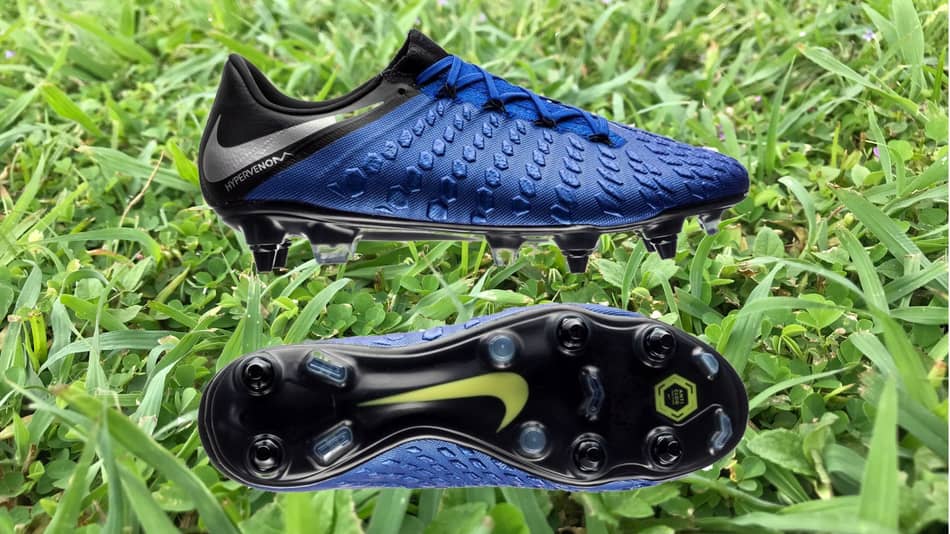
A common problem when we play on soft ground playing surfaces is that the mud of the surface sticks into our soleplate. After some time playing, it accumulates so much that makes the soccer cleat considerably heavier, totally ruining the playing experience.
To solve this problem, Nike created a technology called “Anti-clog” to repel mud from sticking into the soleplate that truly works. If you are completely sure you need a pair of SG boot, I would recommend you buy a pair of Nike SG cleats that offer this technology like the ones in the picture.
What to do if you’re playing on both surfaces?
If you are playing on both surfaces and don’t want to spend the money on buying the two pairs, then just buy a pair of firm ground FG soccer cleats. I’ve personally used FG cleats in both surfaces and had no problem at all. FG cleats are the best way to get the most out of your money if you are playing on multiple playing surfaces.
Comparing Price, Durability, and Weight
When we compare both FG and SG boots in durability and price, we’ll find that both are basically the same. The difference comes when we compare weight. Normally, SG boots will be slightly heavier than FG soccer cleats because the outsole has metal studs and a different constitution. However, the difference in weight is not significant at all, and will be hard to be noticed on wearing the cleats.
How to choose the best pair of Soccer Cleats for you
One of the hardest things in soccer is the process of choosing soccer cleats. There are a lot of factors to take into considerations and basic principles you should know in order to buy the correct pair for yourself. In this article we only talked about two playing surfaces (SG and FG), but in soccer there are actually 5 playing surfaces (SG, FG, AG, turf, indoor), to which each one has a different type of shoe.
It is important you completely understand the differences between each one so you can buy the right pair for your case. Choosing the wrong outsole can totally ruin your playing experience with the shoe and can put you in danger of suffering an injury. Besides the outsole, you also need to consider the different uppers, soccer cleat feels, among others.
There is a lot of information on the internet related to soccer cleats. Everything is mixed up everywhere and can be confusing to understand, and to find the right information. To solve this problem I created “The Best Guide To Choose The Perfect Soccer Cleats for You”. In there, you’ll find absolutely everything you possibly need to know about soccer cleats.
Related Questions
Can you use firm ground boots on turf or Astroturf? Absolutely not. FG soccer cleats have long studs meant to penetrate the ground on a natural grass soccer pitch. Astroturf is just a synthetic grass carpet that has no level of deepness into it. If you do it, you’ll suffer from considerable stud pressure, and you can injure your lower joints like knees, ankles, and even your hip.
Can you use turf soccer shoes indoor? I wouldn’t recommend to use them indoor mainly because of durability issues. The friction in an indoor soccer court is considerably higher than turf. If you use them regularly at indoor the turf outsole will wear off fast and you’ll be unable to use them on turf. I’ve used turf shoes at indoor, and I’ve felt uncomfortable and unbalanced in them to be honest.

